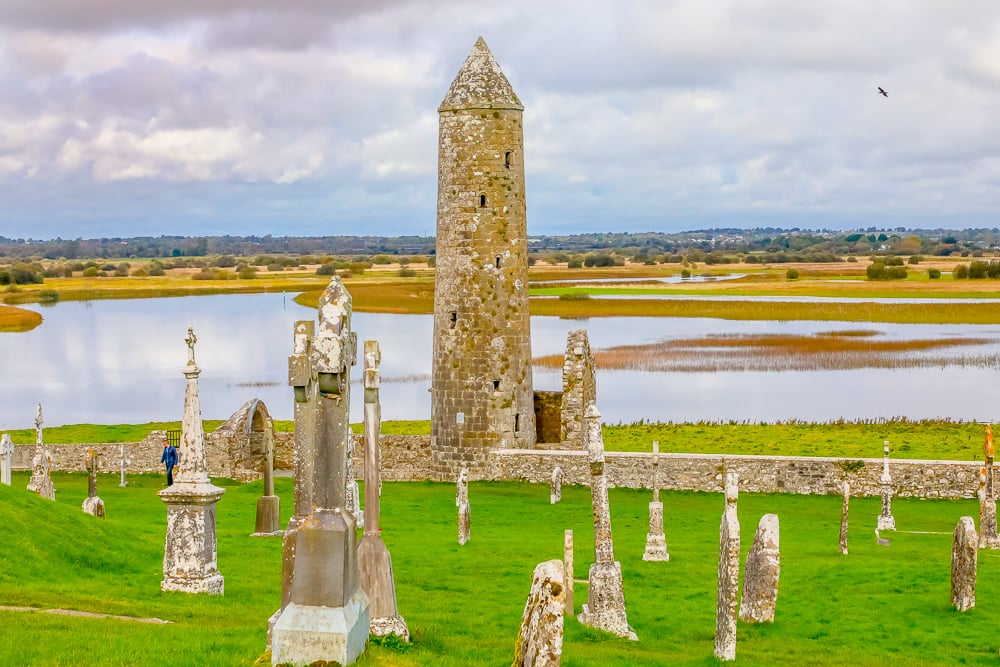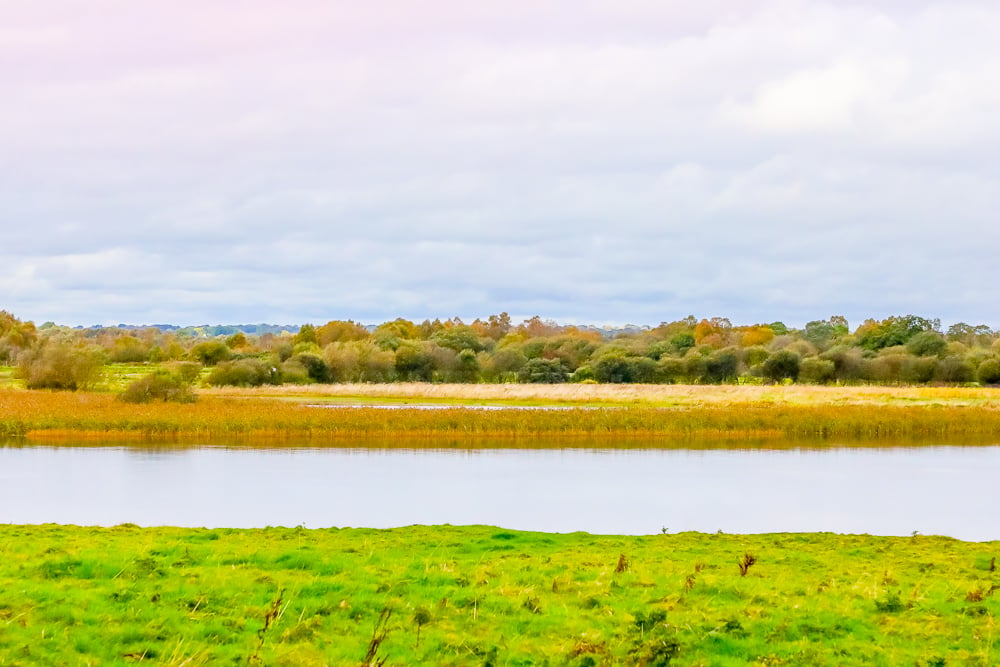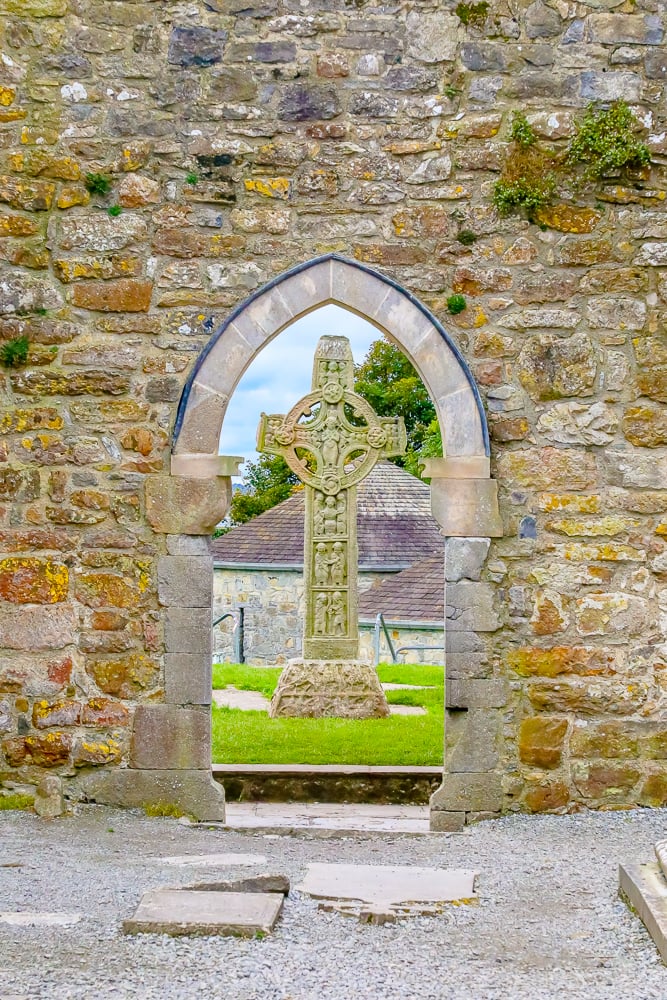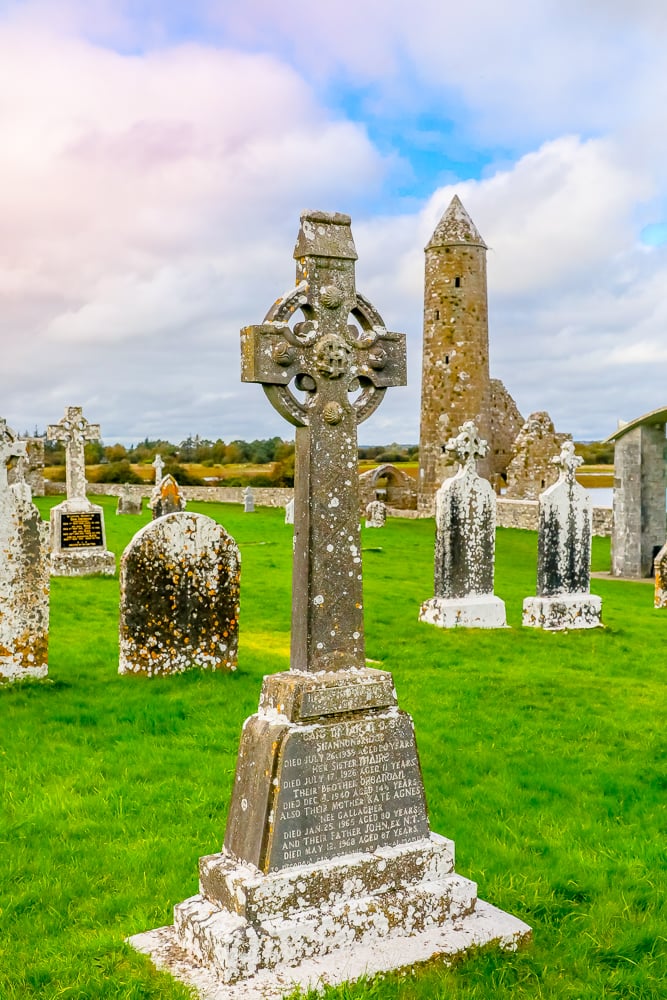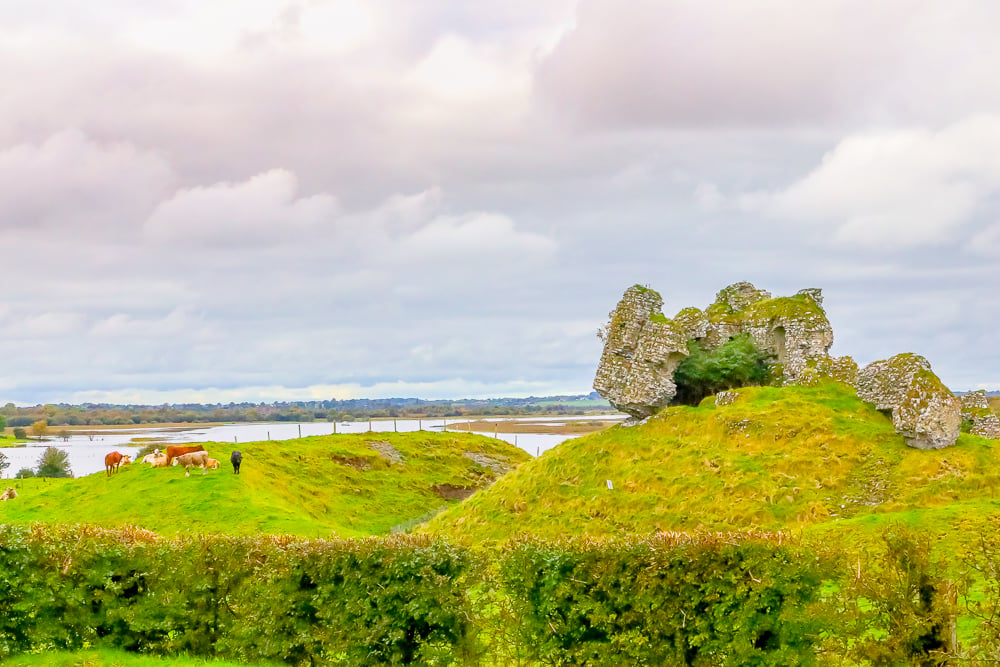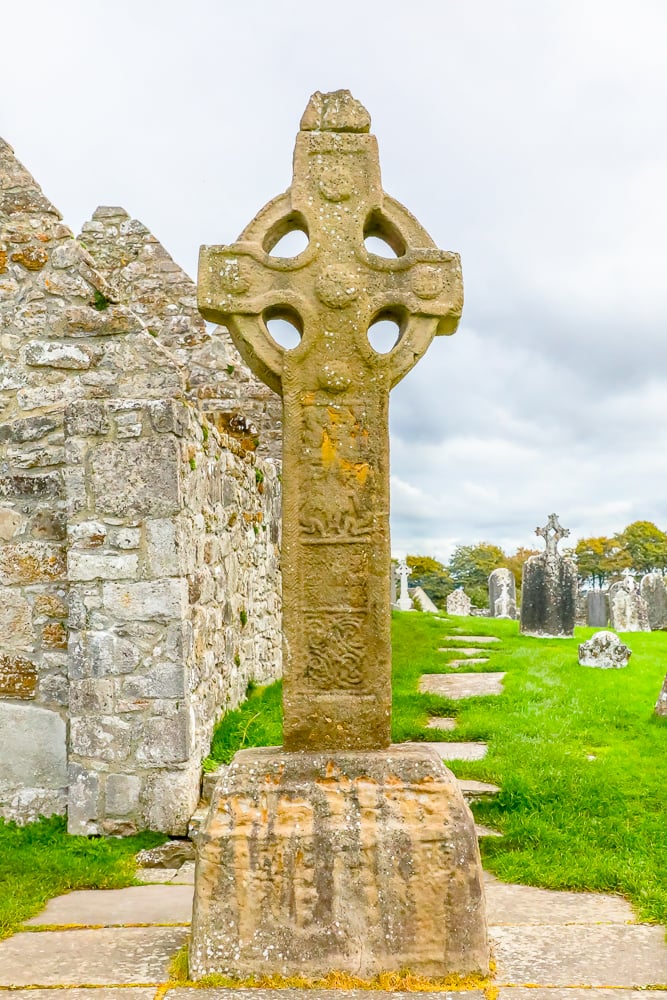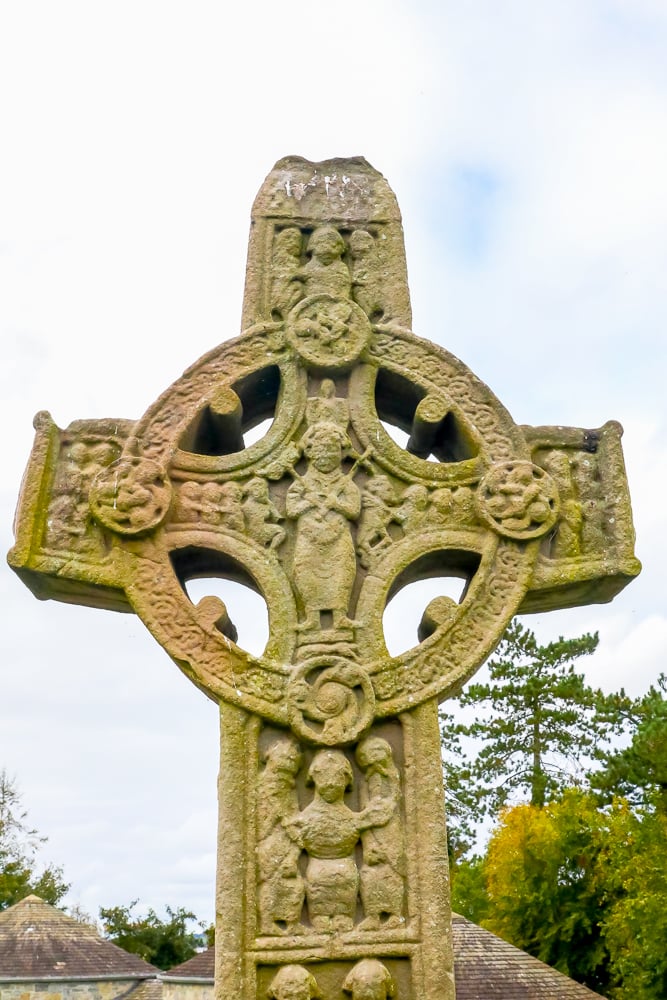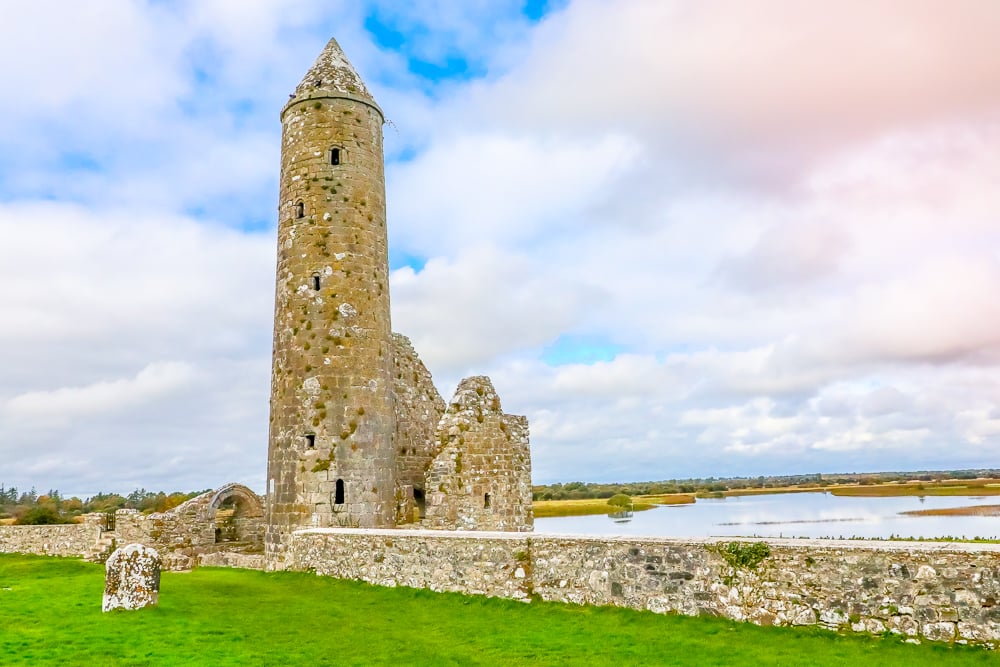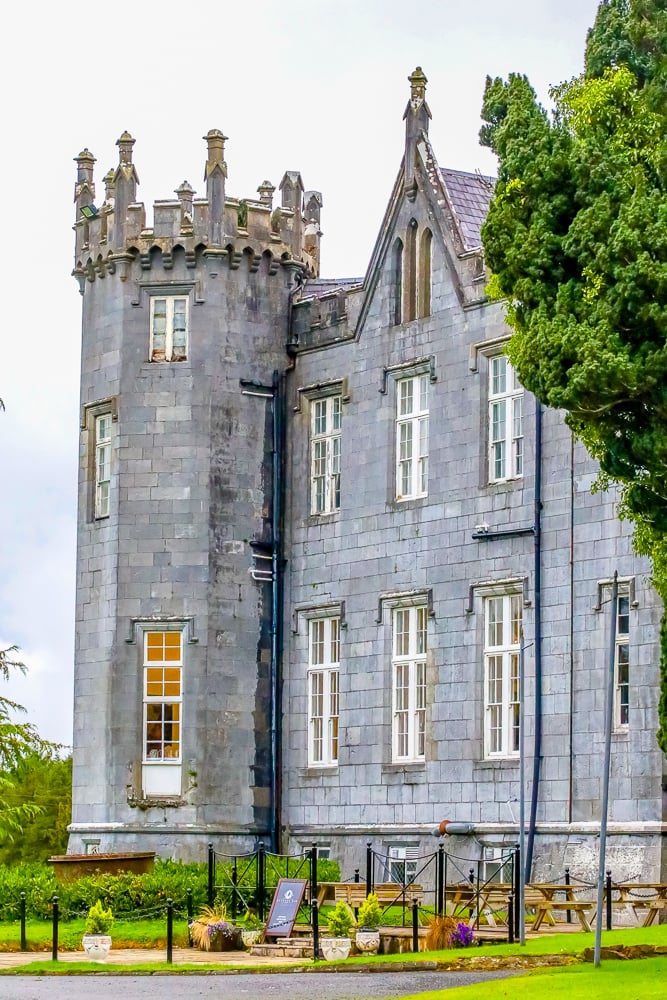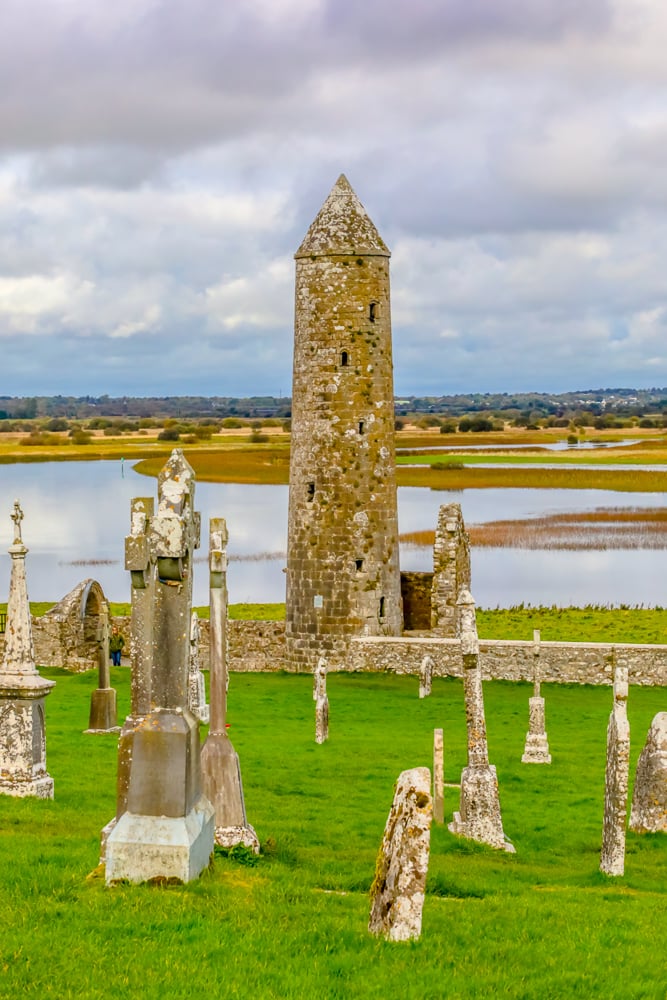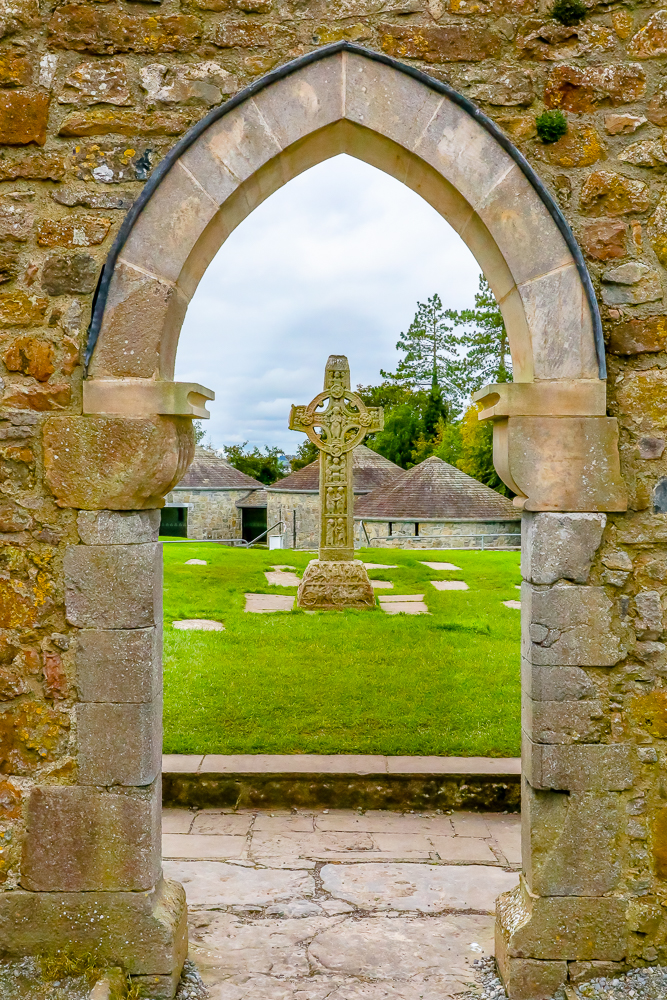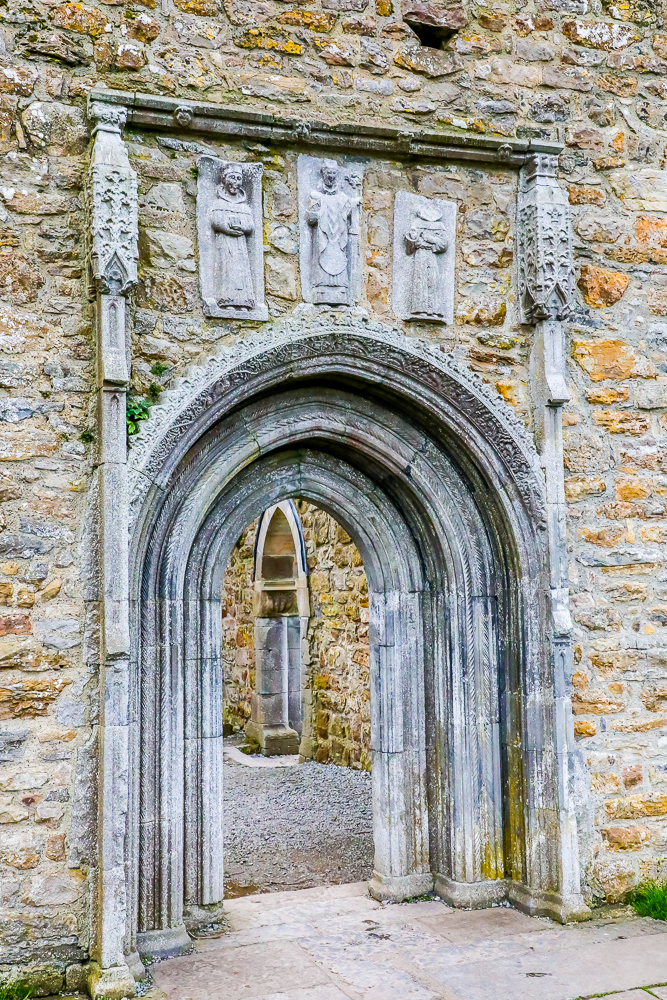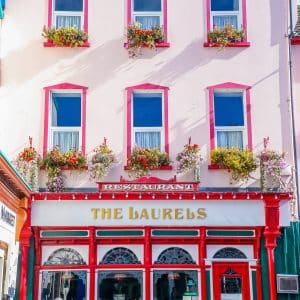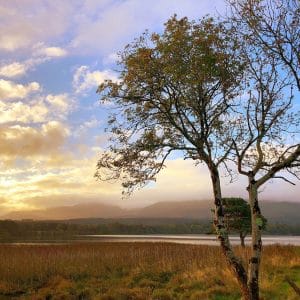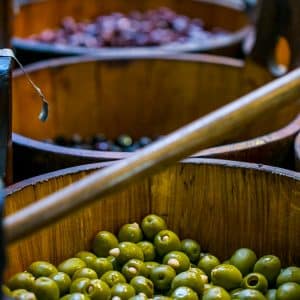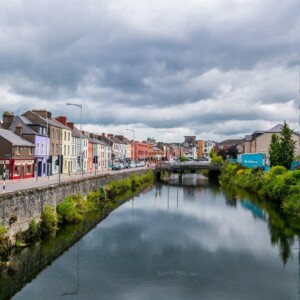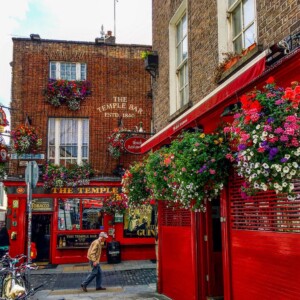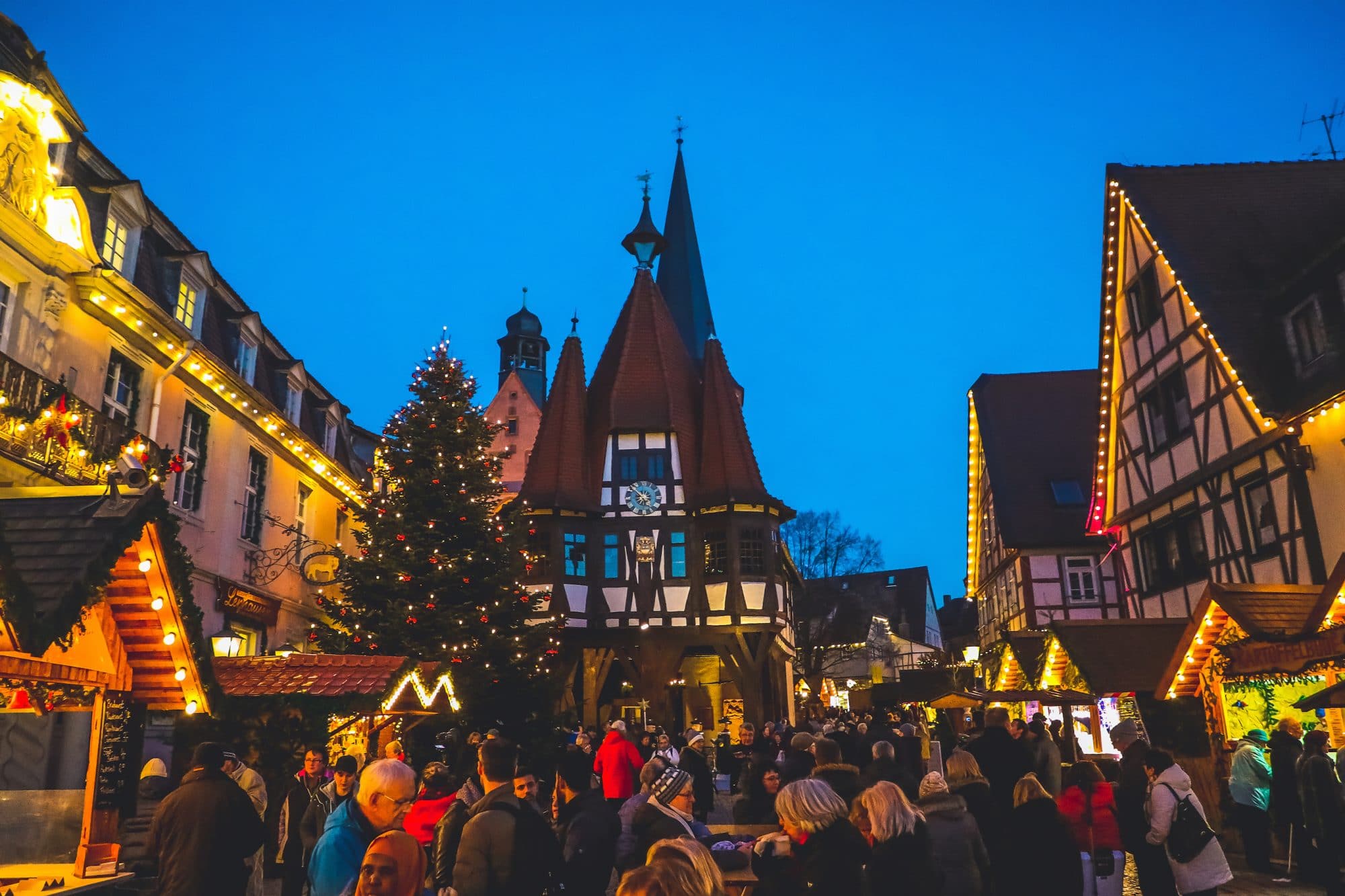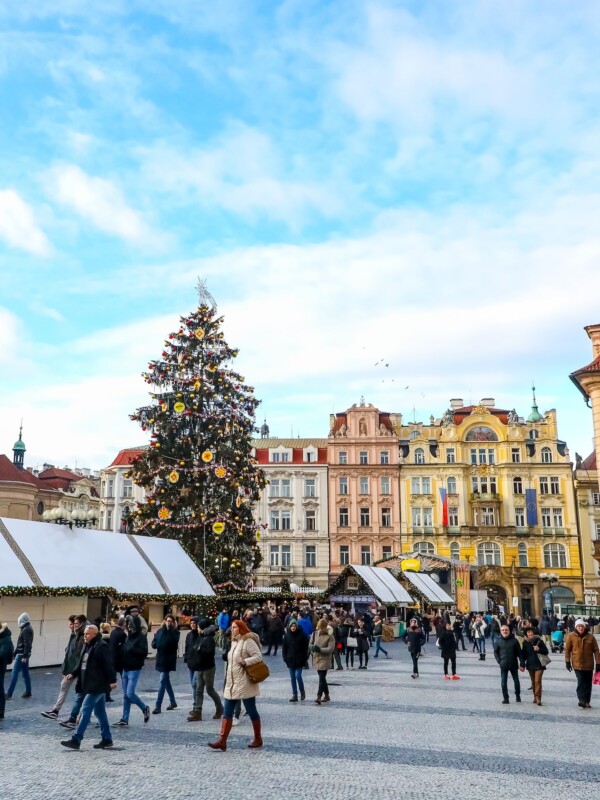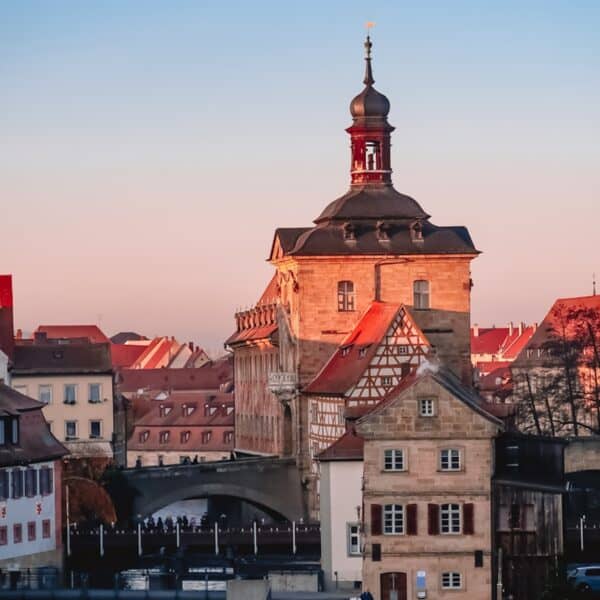Clonmacnoise Ireland – Touring Early Christian Sites in Irelands Midlands
Apr 27, 2018, Updated Feb 05, 2021
This post contains affiliate links. Please read our disclosure policy.
Clonmacnoise Ireland – Touring Early Christian Sites in Irelands Midlands – the tiny ancient Christian abbey along the banks of the Shannon River in Ireland’s Midlands. Clonmacnoise in County Offaly – about an hour from Limerick, two hours from Dublin, and a half an hour from Athlone.
One of my favorite things to do when traveling is to explore history where it happened – I love learning about different places and cultures – and one of my all time favorite countries to explore is Ireland!
My family is Irish (my mother’s family is a very large, very Catholic, very stereotypical, VERY proud Catholic family) – and after doing Ancestry DNA testing, we found out my dad’s family was also very Irish (my great-grandfather was adopted, so we had no clue where his ancestors came from) – which could explain why I feel so drawn to the Emerald Isle and love it so much.
Ireland is truly one of my favorite places on Earth – and when I found myself there for a conference last fall, I decided I would stay a couple extra days, by myself, to explore around the Midlands of Ireland – since they are a bit quieter, much calmer and “off the tourist path”, and home to tons of important Early Christian sites and artifacts.
I’ve always been drawn to learn more about Irish and UK island history – especially early Christian sites founded by the 12 Apostles of Ireland who are a major part of the spread of Christianity through Ireland and the UK as well as some of mainland Europe.
I love early Irish history so much, my husband and I even named our kids after Saint Brigid of Kildare and Saint Finian of Clonard, who were part of the 12 Apostles of Ireland. So when I was looking for interesting things to check out in Ireland last fall, I stumbled upon pictures of Clonmacnoise and knew I HAD to go!
After leaving Shannon where I rented a car, I headed East on the highway towards Dublin, then drove through tiny towns and gorgeous rolling hills of Irish countryside along the Shannon river to get to Clonmacnoise – which is just outside Athlone, the gorgeous lakeside town that is super affordable, laid-back, and charming in between Dublin and Limerick.
Ireland’s midlands aren’t huge draws like Blarney Castle, the Cliffs of Moher, or Killarney’s National Park – but they should NOT be overlooked.
The winding lanes in the midlands lead to some of the most charming and interesting spots of interest- especially for those who love learning about early church history and see ancient relics from Irish Saints.
Clonmacnoise was a perfect place to dive deeper into early Irish history – you can spend hours reading about history – or just visit for about a half an hour. It’s not too crowded (in fall, I even had the monastery almost completely to myself at one point in the day), and was very easy and safe to tour as a solo female traveler.
I’m going to share some of my favorite things I learned at Clonmacnoise – but if you’re heading to Ireland and looking for things to see near Athlone (or to break up the drive between Dublin and Shannon/Killarney/Galway), I am including a ton of tips to a great visit (including where to eat, drink, and what to do nearby) at the end of the post!
Clonmacnoise Ireland – Touring Early Christian Sites in Irelands Midlands
One of the most compelling reasons to visit Ireland, and specifically Ireland’s Ancient East and midlands, is touring ancient Christian sites where Christianity first spread through Ireland and the UK.
While the world knows Saint Patrick and loves to celebrate all things green in March – many people don’t know the incredible history of the spread of Christianity through the Emerald Isle.
Clonmacnoise, though it isn’t as well known as many sites across Ireland, is a definite must visit if you’re interested in Ireland’s ancient history!
Clonmacnoise Ireland at a Glance
The Clonmacnoise Monastery was founded in 544 by St. Ciaran, who along with seven companions met Diarmait Ui Cerbaill and together built the first wooden church at the site.
Artisans from Clonmacnoise are famous for creating beautiful and enduring work, including the Clonmacnoise Crozier (now located at the National Museum of Ireland), the Cross of the Scriptures, and The Book of the Dun Cow (a manuscript that dates to the 12th Century.)
The site was handed over by the Church of Ireland in 1995 to the Irish Government, and the current visitor’s center opened in 1993.
Pope John Paul II even once visited the Clonmacnoise Monastery site in 1979!
The cemetery at the site is still in use today, and religious services are held regularly during the summer months.
The Abbey has a couple stone buildings and numerous graves inside the abbey grounds, as well as a round tower, large stone
St. Ciaran and the Clonmacnoise Abbey’s History
Saint Ciaran, who was born around 516 in County Roscommon, is a venerated (recognized as a saint) saint in both the Roman Catholic and Eastern Orthodox Churchs – and one of the 12 Apostles of Ireland (the key group of Saints who spread Christianity through Ireland.)
The Clonmacnoise Monastery was founded in 544 by Saint Ciaran, who along with seven companions met Diarmait Ui Cerbaill and together built the first wooden church at the site as the 12 Apostles of Ireland were tasked with building large monasteries throughout Ireland – as large schools, missions, and strategic bases especially along the Shannon River.
St. Ciaran died just five short years after founding the monastery of the plague- and Diarmait went on to become the first Christian High King of Ireland.
Saint Ciaran is said to have been buried under the first wooden church, now the site of the 9th Century stone oratory.
Toward the close of the 7th Century, many of the students and professors were wiped out by plague, and the site saw its greatest growth during the 8th-12th centuries.
During those 400 years, the monastery was attacked by the English, Irish, Vikings, and Normans many times.
The original wooden monastery buildings were replaced by stone in the 9th Century, and while the early years saw only an average of under a dozen residents, by the 11th Century there were 1,500-2,000 residents in the area.
In addition to the scholars, monks, and students living at the monastery itself, the site would have been surrounded by a town of farmers, craftsmen and tradespeople to support those living there.
As Athlone grew in the 12th century, Clonmacnoise started to dwindle in size and activity- at which time the site was designated as the seat of a small and impoverished diocese.
In 1552, the English garrison at Athlone destroyed and looted the monastery and left it in ruins.
Important Early Works from Clonmacnoise
Artisans from Clonmacnoise are famous for creating beautiful and enduring work, including the Clonmacnoise Crozier (a viking-style gilded staff that is now located at the National Museum of Ireland), the Cross of the Scriptures, and The Book of the Dun Cow (a vellum manuscript dating to the 12th Century.
Buildings at Clonmacnoise
The Clonmacnoise Abbey site includes ruins of a cathedral, seven churches, two round towers, three high crosses, and what is said to be the largest collection of early Christian grave slabs in Western Europe. There is a small tea room on site to enjoy a break after touring.
Where to Stay Near Clonmacnoise
Where to Stay Near Clonmacnoise
While touring in the area, I stayed the first night at the Kinnitty Castle Hotel, a lovely spot with its own rich history.
The original castle at Kinnitty was destroyed in 1209 and rebuilt by the Normans in 1213, and a nearby Abbey was built on the site as well (the High Cross and Abbey wall still remain).
In 1630 William O’Carroll built a new castle near the Abbey, which was confiscated by the English in 1641, and granted to Thomas Winter by the Crown in 1664 as a reward for military service.
The estate was sold by descendants of Winter to the Bernard family in 1764, and it was updated and expanded under the direction of the Pain brothers (architects) and Lady Catherine Hutchinson, wife of Thomas Barnard, in 1811.
During the Irish Revolution the castle was burned in 1922, and rebuilt by the Barnard family in 1928. The family lived there until 1946, when they sold it to Lord Decies, who in turn sold it to the state in 1951.
The state retained ownership until 1994, during which time it became a forestry college. It has since been converted into a luxury 37-room hotel and conference center.
Kinnitty Castle is roughly 45 minutes from the Clonmacnoise Monastery site.
After Clonmacnoise, I stayed at the Radisson Blu Athlone – which I sadly have no pictures of, despite it being a gorgeous riverfront hotel. I got to Athlone exhausted, and just might have fallen asleep at about 7pm.
The hotel was gorgeous, quite spacious, clean, and offered easy parking – and makes for an easy halfway point to stop between Dublin and Shannon.
Tips to Touring Clonmacnoise Abbey
Clonmacnoise Abbey is a fabulous tourist destination – one that is less crowded and crazy than other popular tourist spots in Ireland, making it a great destination to spend a bit more time at, taking pictures, walking the grounds, and really experiencing all of the information the visitors center provides.
There are a couple tips and tricks to a memorable visit, however, so to have the best trip to Clonmacnoise, take some of these in mind!
-
Know the ticket prices.
- Clonmacnoise, like many Ireland’s historic attractions, has an entrance fee. As of spring 2018, it is 8 Euros to visit Clonmacnoise, and you can buy a family ticket (2 kids, 2 adults) for 20 euros.
- You can book your tickets before heading to Clonmacnoise here.
- I was able to use my credit card to purchase my ticket – cash not required.
-
Dress for Ireland’s weather.
- I’m not going to sugar coat it – Ireland, no matter the season, can be cold, rainy, muddy, and windy. Especially when you’re right on the Shannon river. Dress in layers, especially in summer, as the weather is incredibly finicky.
- When I visited Clonmacnoise in late September, I wore a scarf, hat, medium weight rain jacket over a long sleeve tee shirt, jeans, and duck (waterproof hiking) boots. I was freezing at the beginning, but ended up shedding the jacket, scarf and hat after the clouds opened up towards sunset and it got warm.
-
Take caution when not on walkways.
- Like most historic sites, take care when exploring Clonmacnoise.
- There are accessible walkways throughout the former abbey, but you should use caution when walking through the abbey’s grass as there are many gravestones in the ground, as well as rocks and slick areas that are easy to overlook.
-
Be respectful.
- While services at Clonmacnoise only take place in summer, visiting the abbey should still be treated with the respect you would take visiting a graveyard or church. Don’t be loud, don’t let kids play around, and don’t duck through sections that are roped off or closed.
-
Grab a guide.
- The visitors center at Clonmacnoise offers numerous texts, brochures, and books to help understand the abbey’s historical significance – grab one and lead your own guide through the history of Christianity in Ireland.
-
Plan on extra time to tour.
- I thought visiting the abbey would be a very quick roadside stop sort of attraction – but I ended up spending a couple hours at the abbey, wandering along the shannon river, exploring the round towers, walking over to the former Clonmacnoise Castle to take photographs (you can’t get super close to the castle ruins, but it is certainly worth the short walk past the parking lot to see what you can of the ruins.)
-
Grab a cuppa at the small cafe.
- If you need a cup of tea or coffee, or a cold snack/sandwich, there is a small cafe in the Clonmacoise abbey grounds.
- If you need a cup of tea or coffee, or a cold snack/sandwich, there is a small cafe in the Clonmacoise abbey grounds.
-
Arrive early – or late.
- When I arrived at Clonmacnoise, there were hardly any parking spots available – and many people were jockeying for spots along the road. Thankfully, since I was by myself and driving the worlds tiniest car, I could snag a narrow spot next to a rock wall nobody else wanted. The line to get in the abbey was quite long, and there were many people heading in and out. By the time I left, close to the Abbey’s closing time, I was practically the only person there.
- To avoid the crush of tourists (most driving from Dublin to Shannon or vice versa), get to Clonmacnoise early – or head in closer to closing time and stay in nearby Athlone.
- Make sure you know the closing time before visiting and give yourself plenty of time to tour.
-
Visit the small gift shop.
- I don’t always reccomend tourists visit gift shops – as you can find the same cartoonish leprechaun and sheep stuffed animals all over the emerald isle. The shop at Clonmacnoise, however, had an exceptional selection of books on both the history of Ireland, and the Christian church in Ireland – as well as some gorgeous local artisan goods and crafts, great artwork, and tons of gorgeous replica crosses carved out of peat. I bought quite a few of the peat crosses back from Clonmacnoise – including some of Celtic High Crosses we visited with my family when we took my kids to Ireland in 2016. If I had more room in my suitcase, I would have bought a ton more!
- The gift shop also offers chips, drinks, and ice cream.
- To get to the gift shop, you’ll actually walk out of the abbey, through the parking lot, and towards the farm next to the abbey – it is not in the gates (though in summer I believe they sell more items inside the abbey when there are more visitors – I was visiting in fall when many things across Ireland’s historic sites are being fixed up or scaled down after a hectic summer.)
For more from my trips to Ireland, please visit :
Things to See in Killarney Ireland
Cork, Ireland- Where to stay, what to eat, what to do
Why You Should Visit Dublin; What to Do In Dublin
Killarney National Park
